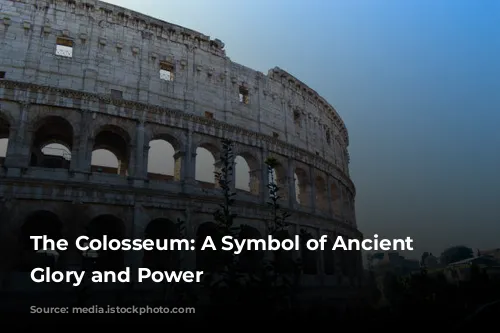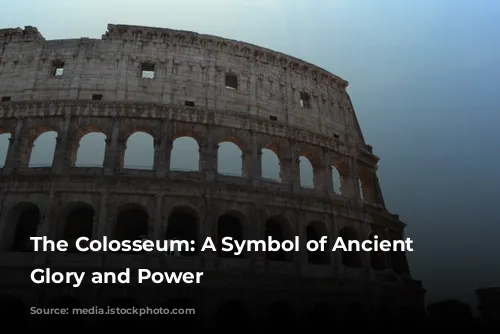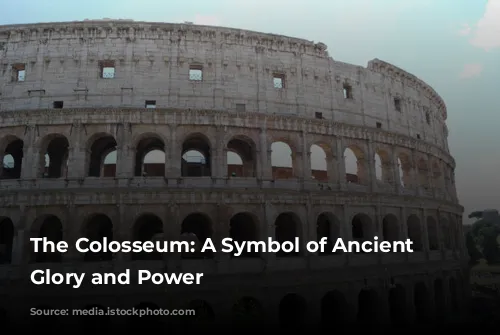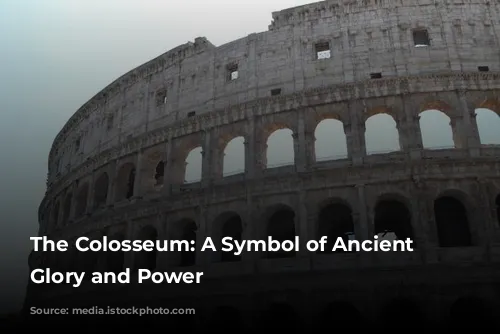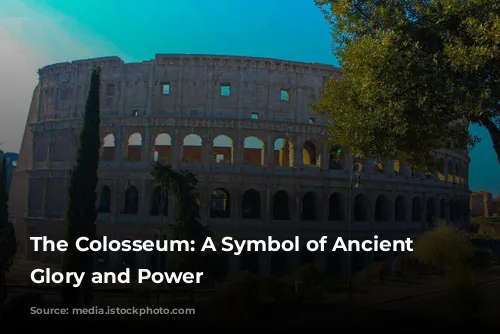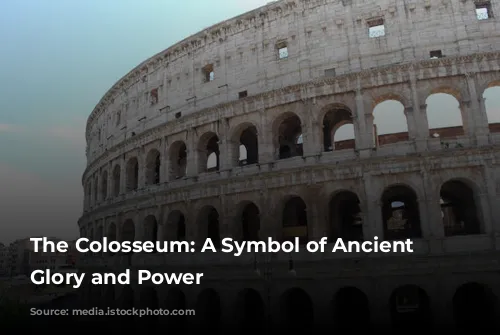The Colosseum, also known as the Flavian Amphitheatre, stands as a majestic monument to ancient Rome’s grandeur. It is the largest and most imposing amphitheatre in the Roman world, and one of the most famous landmarks in the entire world. Construction began under Emperor Vespasian of the Flavia family and was completed by his son Titus in 80 A.D.
The Colosseum’s grand opening ceremony lasted for 100 days, a spectacle of gladiatorial combat, animal hunts, and even mock naval battles. This event, called a naumachia, involved flooding the arena with water and staging impressive sea battles. The historian Suetonius recorded that 5,000 animals were slaughtered during the opening festivities.
The Colosseum’s Name: A Story of Prophecy and Lost Statues
But why is the amphitheatre called the Colosseum? This name first appeared in a famous medieval prophecy by Venerable Bede. He declared that “Rome will exist as long as the Colosseum does; when the Colosseum falls so will Rome; when Rome falls so will the world”. It is speculated that Bede derived the name from a towering statue of Emperor Nero, known as the Colossus, which stood nearby. This colossal statue, standing 35 meters high, has been completely destroyed, leaving only the name behind.
Architectural Marvels: From Arches to Aqueducts
The Colosseum is a testament to Roman engineering prowess. Its elliptical shape was carefully designed to hold a large number of spectators. The building was constructed in under ten years, an incredible feat for such a massive structure. The Romans’ secret? Their mastery of the arch, a crucial element in Roman architecture. The arch allowed the Romans to effectively distribute the weight of heavy constructions. Think of the iconic Roman aqueducts—a testament to the effectiveness of the arch. The Colosseum itself can be seen as a series of aqueducts built one on top of the other.
A Legacy of Plunder and Restoration
What we see today is only a shadow of the Colosseum’s former glory. Three-fifths of the outer wall are missing, stripped of their once-splendid travertine stone slabs during the Middle Ages. This material was used to construct other iconic Roman structures, including the Barberini Palace, Piazza Venezia, and even St. Peter’s Basilica.
A World of Entertainment: From Gladiators to Animals
The Colosseum could hold up to 70,000 spectators, offering a unique and unforgettable experience. The seating was carefully designed to ensure that everyone had a clear view, regardless of their social status. Roman citizens were granted free entry, but seating was meticulously divided based on class. The upper tiers were reserved for commoners, with separate sections for men and women. As you moved closer to the arena, the higher your social status. The front row was reserved for senators, vestals, priests, and—of course—the emperor.
The Colosseum was also equipped with an ingenious system of sun protection. The Velarium, a massive linen canopy, was suspended from ropes, winches, and wooden poles. This complex system required the skill of 100 sailors from the Imperial fleet to operate, their movements synchronized to the beat of a drum.
The Colosseum’s Hidden Secrets: Underground Wonders
The arena floor itself has disappeared, leaving behind the cellars that housed the equipment used for the spectacles. Two underground levels housed lifts and hoists, complete with counterweights, which were used to bring animals and gladiators into the arena through trapdoors, creating surprising and dramatic entrances. These lifts were also used to raise and lower backdrops, used for hunting scenes.
The Games of the Colosseum: Blood, Spectacle, and Entertainment
The shows held at the Colosseum were a captivating blend of spectacle and symbolism. They provided a means for citizens and their leader to connect through shared experiences, offering entertainment and a distraction from the realities of Roman life. The Venationes (animal hunts) were a staple, pitting exotic animals against each other or against men. These hunts could also serve as public executions, leaving condemned individuals to the mercy of ferocious beasts.
The Silvae, special events featuring recreated forest settings, were equally impressive. Painters and set designers transformed the arena into a vibrant forest, complete with trees and bushes, where animals (not always destined to be killed) roamed freely.
The Gladiators: Warriors, Heroes, and Entertainers
The gladiators were the stars of the Colosseum. They were primarily prisoners of war offered a choice between slavery or fighting in the arena for a limited time. Their courage and skill earned them fame and wealth. The gladiators were often seen as heroes by the Roman people, especially women, who were known to pay large sums to spend time with them. There were twelve distinct types of gladiators, each wielding different weapons and fighting styles. The battles were often dramatic, with a complex system of signals and rules. A wounded gladiator could ask for mercy by raising an arm, and the audience would implore the emperor, seated on his podium, to decide the gladiator’s fate. A thumbs-up meant life; a thumbs-down meant death.
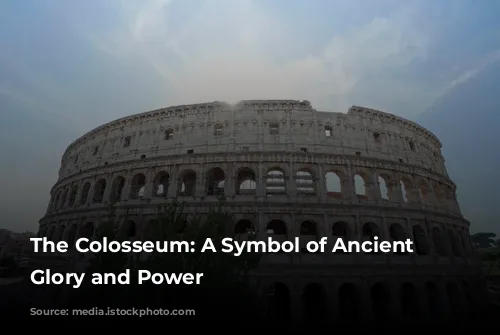
The Colosseum’s Legacy: A Symbol of History and Humanity
The Colosseum, though now a mere skeleton of its former grandeur, continues to captivate audiences. It is a reminder of the grandeur of the Roman Empire and the fascinating lives of the people who lived within its walls. It is a place where history comes alive, where we can imagine the roar of the crowds, the clash of steel, and the thrill of the spectacle. Despite its gruesome past, the Colosseum stands as a testament to the enduring power of human ingenuity and the captivating allure of entertainment. Today, the Colosseum remains a symbol of both the brutality and the artistry of the Roman Empire. Its legacy continues to inspire awe and wonder in visitors from around the globe.
